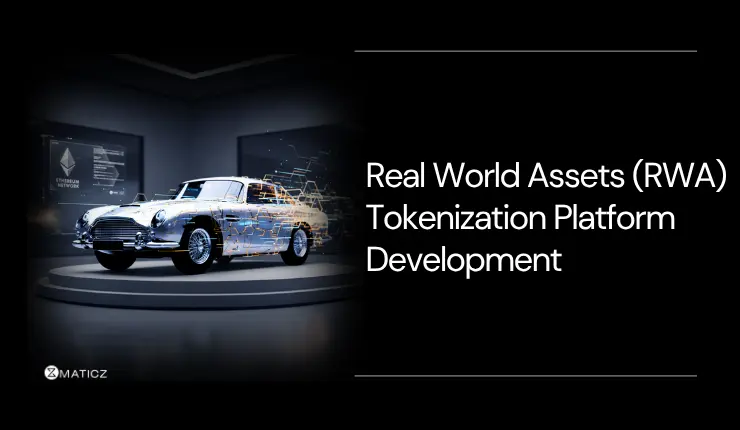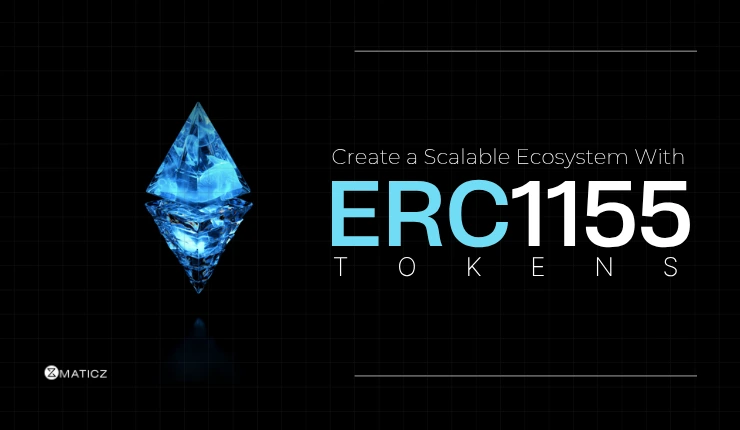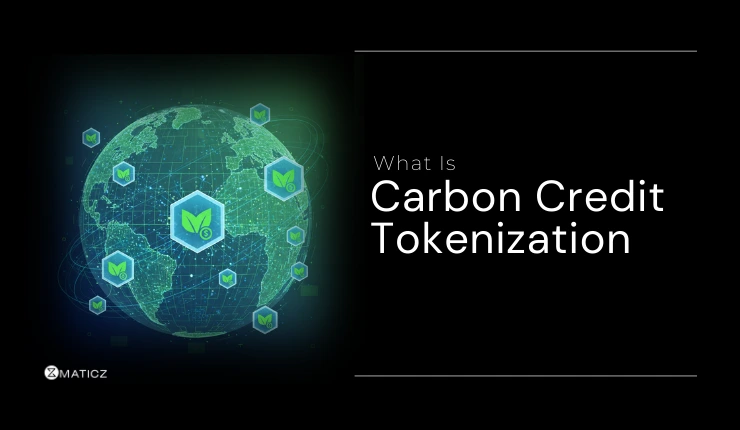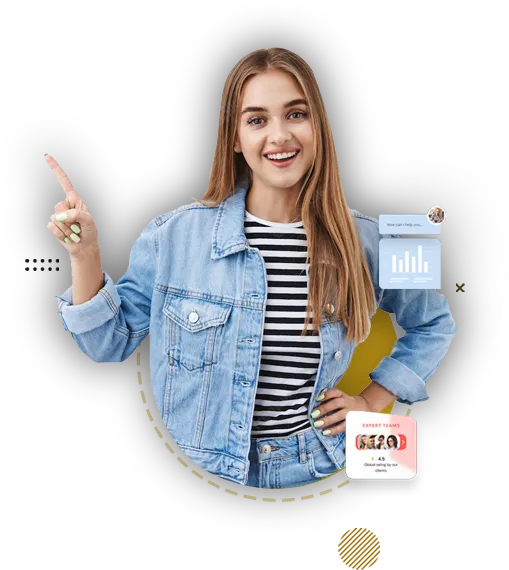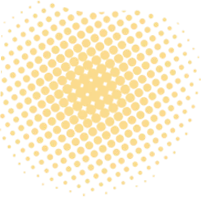Share Posts
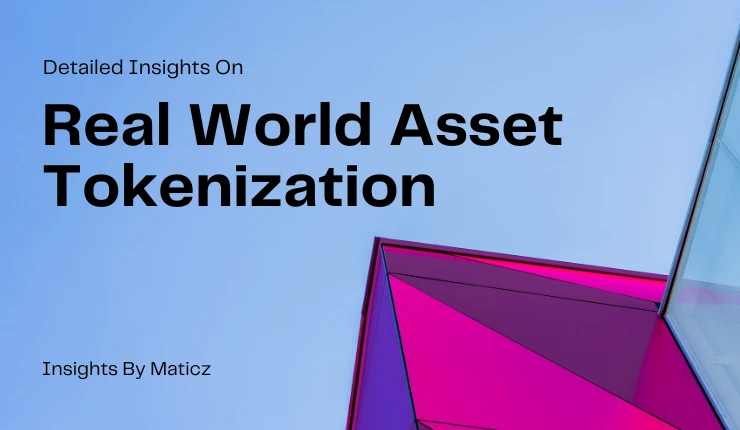
All About Real World Asset Tokenization
54
2474
103
When it comes to digital assets, we mostly think of cryptocurrencies like Bitcoin or Ethereum. These blockchain-based digital assets have brought tremendous benefits in both the crypto world and mainstream finance in which asset tokenization has a big hand. Imagine what benefits this asset tokenization can bring to traditional financial assets.
This transition from traditional asset management to digital tokenization is done through Real-world asset tokenization which is quite popular in mainstream finance. It has the potential to transform numerous illiquid real-world assets into more liquid, fractional, and transparent and create a more equitable investment landscape.
Whether you are a seasoned investor or just curious about the future of finance, then this blog will provide insights into real-world asset tokenization. In this blog, we have discussed what real-world asset tokenization is, how it is created, and what benefits it brings to the table. We also illustrate how this promising use case of blockchain technology can open up new opportunities.
What is Real-World Asset Tokenization?
Real-world Asset tokenization is a process of creating digital tokens on a blockchain that represent physical and traditional financial assets. Those assets can be something physical like cash, commodities, real estate, and artwork, or intangible like stock, bond, equities, and intellectual property.
Each digital token represents a stake of ownership in the underlying asset. Being secured by blockchain technology, it is immutable that no one can change its associated ownership rights. This brings liquidity to traditionally illiquid asset classes and unlocks certain investment opportunities.
By transforming these assets into tokens, they can be easily traded, divided, and managed. Trading these assets no longer involves a complex web of paperwork, intermediaries, or legal hurdles. Real-world asset tokenization platform gives investors access to the once unreachable markets.
Types Of Real-World Assets Suitable For Tokenization
Tokenization works well with real-world assets irrespective of whether they are fungible or non-fungible. Here are the types of real-world assets that are best suitable for tokenization.
Commodities
Commodities like precious metals, agricultural products, and energy resources are tokenized by converting them into digital tokens. Tokenization brings many benefits to traditional commodities markets such as increased accessibility, traceability, and liquidity of assets.
Currencies
Financial institutions have started converting real currency holdings into tokens. These digital tokens are also called stable coins that maintain a stable value relative to the currency they represent. Being free from typical banking systems, they allow for faster and more secure transactions.
Real Estate
Tokenizing real estate properties like commercial buildings, residential homes, and undeveloped land makes it easier to invest in real estate. It divides illiquid and high-value real estate assets into smaller tokens making them accessible to a broader range of investors.
Art and Collectibles
Art and collectibles can be converted into unique digital tokens called Non-fungible tokens (NFT). These tokens make it easier to invest in valuable artworks and benefit from their increased value over the years. Tokenizing art and collectibles increases their liquidity and they can be used even as collateral against loans.
Intellectual Property
Even intellectual properties such as patents, trademarks, and copyrights can be tokenized. These tokens are easily traded on blockchain-based platforms with reduced transaction costs and greater liquidity. They help streamline the process of managing intellectual properties and automate royalty payments if programmed with smart contracts.
Stocks, Bonds, and Securities
Financial institutions like banks have started tokenizing stocks, bonds, and securities to represent them as digital tokens. These tokens represent their underlying asset and allow for asset fractionalization, high liquidity, and new opportunities for investors and businesses.
How Does RWA Tokenization Benefit Investors?
Imagine you have an artwork of Vincent Van Gogh’s The Starry Night that you want to tokenize without selling. Most probably you would end up with a single seller and have to deal with lawyers and appraisers yourself who will ask for commission fees.
But if you tokenize it, many will buy shares of that single artwork. Both the buyer and seller can instantly trade their asset and that too with minimal gas fees. So now the buyers can trade their shares without coordinating with other shareowners.
Increased Asset Liquidity
Tokenizing a high-value artwork allows you to divide it into shares that people can buy. Instead of waiting for a single buyer who can afford the entire artwork, you can attract many buyers who purchase smaller shares.
This makes the artwork more liquid, meaning it can be easily bought or sold in smaller portions. Investors can quickly trade their shares in the artwork without waiting for a long time or finding a specific buyer.
More Investment Opportunities
With tokenization, you can offer shares to a wider audience. Investors who might not have the funds to buy the whole artwork can now invest by purchasing a share. This opens up new investment opportunities for people who are interested in high-value assets but could not afford them before.
Transparent Recordkeeping
Tokenizing the artwork creates a clear, digital record of ownership and transactions on the blockchain. This means every time a share of that artwork is bought or sold, it is recorded transparently and securely. Investors can see exactly who owns what and track the history of their investments.
Market Expansion
Tokenization also allows you to reach investors beyond your local area. Since the shares can be traded online, you can attract buyers worldwide. This global market expansion means more people can invest in the artwork, potentially increasing its overall value and market interest.
Standard Formats
The shares of the artwork will follow standard token formats, such as those used in blockchain platforms. These standard formats make it easier to trade shares across different platforms and ensure that all transactions are compatible with existing systems. This simplifies the trading process and makes it more efficient for investors.
Disruption In Industries
By tokenizing, you are participating in a broader trend of disrupting traditional investment industries. Tokenization challenges the old ways of buying and selling high-value assets and introduces a more modern, digital approach. This shift can lead to innovations in how assets are managed and traded, potentially transforming various industries beyond just art and collectibles.
How to Tokenize Real-World Assets?
Tokenizing real-world assets can seem complex, but breaking it down into clear steps makes the process more manageable. Here is a simple guide to help you understand how to tokenize an asset, from start to finish.
1. Select and Evaluate The Asset
2. Establish Legal and Financial Framework
3. Choose a suitable Blockchain Platform
4. Define The Token Standard
5. Design Tokenomics
6. Create A Smart Contract
7. Tokenize The Asset
Step 1: Select and Evaluate The Asset
The first step in tokenizing an asset is to choose which real-world asset you want to convert into a digital token. This could be anything from real estate and art to stocks and commodities. Once you have selected the asset, you need to evaluate its value. This usually involves getting a professional appraisal to determine the asset's current market value. This valuation is crucial because it underpins the worth of the digital tokens you will create.
Step 2: Establish Legal and Financial Framework
Before you start creating tokens, you need to set up a legal and financial framework. This involves ensuring that you comply with relevant laws and regulations. You will need to work with legal experts to draft agreements and contracts that outline the rights and responsibilities of token holders. It is also important to establish how financial transactions will be managed, including how the proceeds from token sales will be handled.
Step 3: Choose The Suitable Blockchain Platform
Next, you need to choose a blockchain platform where you will issue your tokens. Popular platforms like Ethereum or Binance Smart Chain offer the infrastructure needed for tokenization. Each platform has its features and benefits, so select one that fits your needs and supports the type of token you want to create.
Step 4: Define The Token Standard
With the blockchain platform chosen, you need to define the token standard that your digital tokens will follow. Token standards are technical guidelines that ensure compatibility and interoperability with various systems. For example, ERC-20 is a common standard on Ethereum that allows tokens to be easily traded and integrated with other applications. Choose a standard that aligns with your platform and goals.
Step 5: Design Tokenomics
Designing Tokenomics includes deciding how many tokens will be issued, how they will be distributed, and what their purpose will be. For example, you might decide to issue 1,000 tokens representing shares in a real estate property, with each token giving the holder a proportional stake in the asset. Design your tokenomics to provide clear value and incentives for investors.
Step 6: Create Smart Contracts
A smart contract is a digital agreement that automatically executes and manages transactions according to predefined rules. You will need to create smart contracts for your tokens that outline how they will be issued, traded, and managed. This contract is programmed into the blockchain and ensures that all transactions are carried out accurately and securely.
Step 7: Tokenize The Asset
Finally, it is time to tokenize the asset. This involves issuing the digital tokens on the chosen blockchain platform based on the smart contract and tokenomics you have set up. Once the tokens are created, they can be bought, sold, or traded on digital platforms. Investors can now purchase shares of real-world assets through these tokens, making these tokenized assets more accessible and easier to manage.
Pros of Real-World Asset Tokenization
Real World Asset Tokenization has significant pros that improve liquidity and democratize the digital ownership of assets. Let's explore some of the major pros that offer for investors.
Reduced Transaction Costs
Tokenization lets you split your asset into shares and allows multiple people to invest in it. Compared to the fees paid to traditional expensive intermediaries, transaction fees are relatively lower. They mostly deal with minimal gas fees.
Instant Transactions
Imagine how much you must spend buying and selling high-value artwork. You have to go through meticulous paperwork and negotiations. Whereas with tokenization, you can be done with transactions almost instantly.
Enhanced Portfolio Diversification
Real-world asset tokenization allows you to invest in smaller portions of high-value assets. Instead of investing all your money in one asset, you can own multiple shares and diversify your portfolio.
Improved Accessibility
In most cases, you need a large amount of money to buy an entire asset. This makes it unreachable for more people especially those who are financially weak. But tokenization allows you to own at least a part of valuable real-world assets that would otherwise be out of reach.
Cons Of Real World Asset (RWA) Tokenization
Tokenizing real-world assets is highly profitable but comes with its challenges and risks. Let’s explore them in detail.
Regulatory Uncertainty
The lack of regularity clarity for tokenized assets can be a challenge for the wider adoption of tokenization. Countries like the United States are quite unsure of the future of digital asset regulation. This uncertainty can pose a challenge, especially during cross-border transactions of digital assets in which multiple jurisdictions are involved.
Technological Risks
There are some technical challenges involved in tokenizing real-world assets. Limited access to technologies and technical failures can lead to scalability issues, network congestion, and interoperability challenges. This may disrupt the entire tokenization platform and could result in financial losses.
Custody and Asset Management Challenges
Custody and asset management are more important when it comes to asset tokenization. These solutions protect tokenized assets against theft, fraud, and unauthorized access. Implementing these solutions can be a little challenging since it involves several operational and technological challenges.
Security Vulnerabilities
While financial institutions take necessary steps to minimize these risks such as using private blockchains, still tokenized assets face security threats, fraud, and cybercrimes. These security vulnerabilities not only pose risks to asset ownership but also potentially reduce the benefits of asset tokenization.
However, the challenges associated with RWA tokenization are non-trivial. With the right approach, technologies, and strategies, it is possible to solve these issues on both technological and regulation levels. Asset tokenization companies like Maticz can help tokenize your assets without facing any of the above-mentioned issues and reap the complete benefits of real-world asset tokenization.
Wrapping Up
As we look forward, the future of real-world asset tokenization looks promising. According to recent forecasts, real estate tokenization alone could account for nearly one-third of the tokenized asset market by 2030. The entire RWA tokenization market could grow to a staggering $16 trillion by the same year, representing about 10% of global GDP. It is revolutionizing how we invest and manage assets.
As this industry evolves, staying informed and prepared will be key to leveraging the opportunities that real-world asset tokenization presents. If you plan to tokenize your real-world assets or want to develop an RWA tokenization platform, approach Maticz, for asset tokenization platform development.
Tap Into the Future
The latest insights, posts, and project updates - straight to your inbox.
